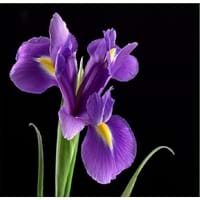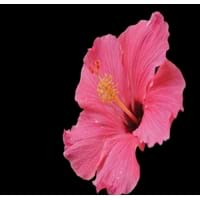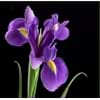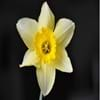Color
Blue, Orange, Pink, Purple, White, Yellow
Orange, Pink, Purple, Red, White, Yellow
Color Meaning
Blue - Peace and Serenity, Orange - Satisfaction and Passion, Pink - Sensitivity and Love, Purple - Elegance and Pride, White - Purity and Innocence, Yellow - Happiness and Friendship
Orange - Satisfaction and Passion, Pink - Sensitivity and Love, Purple - Elegance and Pride, Red - Courage, Desire and Love, White - Purity and Innocence, Yellow - Happiness and Friendship
Line
Not Available
Not Available
Silhouette
Not Available
Not Available
Blossom Texture
Not Available
Not Available
Form
Not Available
Not Available
Sunlight
Full Sun, Part Sun
Full Sun, Part Sun
Watering
Enough
Diligently
Type of Soil
Any Soil, Loamy, Sandy
Well-drained, Loamy
Essential Fertilizers
Lime stone, Nitrogen
Boron, Calcium, Chlorine, Copper, Magnesium, Manganese, Nitrogen, Phosphorus, Potassium, Sulphur, Zinc
Common Pests and Diseases
List of Pests
Aphids, Nematodes, Slugs
Aphids, Mealybugs, Mites, Scale, Whiteflies
List of Diseases
Nematodes
NA
Bloom Time
All Summer Season, Fall Season, Spring Season
All year
Origin
Asia, Europe, United States
China, Pacific Islands
Interesting Facts of
- In Greek mythology Iris is called the goddess of rainbow, as this flower comes in various colors just as rainbow.
- The purple iris is the Tennessee's state flower.
- In China Hibiscus is also called as shoe flower as they use it to polish their shoes.
- Hawaiian and Tahitian wear this flower behind the right flower to announce that they are single and ready to marry,while married women wear it in left ear.
Lifespan
Perennials - a plant that lives for three or more years
Perennials - a plant that lives for three or more years
Habit
Herbs, Shrubs
Shrubs, Trees
Uses
Not Available
Not Available
Health Benefits
Best remedy for Cough & Cold, Treats rheumatism
Best remedy for Cough & Cold, improves the functioning of the lungs, kidneys, and stomach, Regulates the Menstruation cycle
Medicinal Uses
Have diuretic properties, prevents dryness and flaky skin
Acts as an antioxidant, It is Antibacterial, prevents dryness and flaky skin
Culinary Uses
NA
Used in teas
Cosmetic Uses
Best remedy for dandruff, Softens skin, Used in Perfumes
Good for Hair growth, Prevents pre- mature graying, Used in Perfumes, Used in shampoos and soaps
Occasional Uses
Anniversary, Wedding
Valentine's Day
Allergy
Abdominal Pain, Itching, Itchy eyes, Nausea, Vomoting
NA
Scientific Name
Iris Versicolor
Hibiscus Rosa-Sinensis
Sub kingdom
Tracheobionta
Tracheobionta
Super Division
Spermatophyte
Spermatophyte
Division
Magnoliophyta
Magnoliophyta
Class
Liliopsida
Magnoliopsida
Family
Iridaceae
Malvaceae
Sub Family
Iridoideae
Malvoideae
Genus
Not Available
Not Available
Number of Species
Not Available
Not Available
Iris and Hibiscus color
Iris and Hibiscus come in variety of colors. Every color tells a different story. Let’s know about Iris and Hibiscus color meaning in this section. For example Red - Courage, Desire and Love, Pink - Sensitivity and Love,Yellow - Happiness and Friendship, Orange - Satisfaction and Passion, Purple - Elegance and Pride, Blue - Peace and Serenity, White - Purity and Innocence, Green - Prosperity and Optimism. Iris is Bowl in shape and has Floral fragrance whereas Trumpet shaped Hibiscus has NA fragrance.
More facts about Iris and Hibiscus
You must be eager to know more facts about Iris and Hibiscus. Did you know Iris has originated in Asia, Europe, United States while Hibiscus has originated in China, Pacific Islands. One of the Interesting Facts about Iris and Hibiscus is that they can survive almost in pots.
Iris and Hibiscus Uses
Benefits of flowers are universally known. Let’s know about Iris and Hibiscus uses in this section. Iris and Hibiscus have many medicinal properties. Besides, Iris is given on special occasions like Anniversary, Wedding whereas Hibiscus on Valentine's Day. Iris and Hibiscus also have many culinary benefits.
Learn about Iris and Hibiscus Family classification
Flowers classification makes their study easier. Plants sharing same association are grouped together. Let’s learn about Iris and Hibiscus Family classification here. Iris and Hibiscus belong to Plantae. They are further divided in Spermatophyte super division and Magnoliophyta division. This way, different flowers can be organized in a systematic format.





